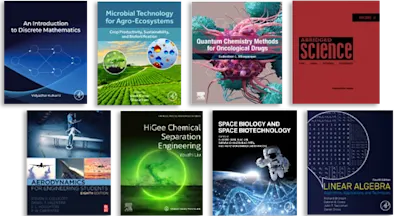
The Number Systems and Operations of Arithmetic
An Explanation of the Fundamental Principles of Mathematics Which Underlie the Understanding and Use of Arithmetic, Designed for In-Service Training of Elementary School Teachers Candidates Service Training of Elementary School Teacher Candidates
- 1st Edition - January 1, 1966
- Latest edition
- Author: Orval M. Klose
- Editors: W. J. Langford, E. A. Maxwell
- Language: English
The Number Systems and Operations of Arithmetic was written for the single purpose of explaining to elementary school teachers (both in-service and in-training) the nature of those… Read more

The Number Systems and Operations of Arithmetic was written for the single purpose of explaining to elementary school teachers (both in-service and in-training) the nature of those basic principles of mathematics which form the foundations and structural framework of arithmetic, and how the familiar formal algorithms of arithmetic stem from these structural principles. The book is organized into two parts. Part I on number systems covers the origin of numerical thinking; natural operations with the natural numbers; natural laws for the natural operations; the inverse operations and convergence and the number systems generated by these operations; and classification of the number systems as abstract systems. Part II on computational algorithms discusses computations with natural numbers, rational numbers, real numbers, and complex numbers. The ""answers"" to all the exercises are also provided in the main body of the text and it is hoped that the student will form the habit of looking there for them.
Preface
Part I The Number Systems
Chapter 1.1 The Origin of Numerical Thinking
1.1.1 The Set Concept in Human Affairs
1.1.2 The Natural Number Concept
1.1.3 The Counting Process
Chapter 1.2 The Natural Operations with the Natural Numbers
1.2.1 Addition Considered as Extended Counting
1.2.2 Multiplication Considered as a Special Case of Extended Addition
1.2.3 Exponentiation Considered as a Special Case of Extended Multiplication
Chapter 1.3 The Natural Laws for the Natural Operations
1.3.1 The Closure Laws
1.3.2 The Commutative Laws
1.3.3 The Associative Laws
1.3.4 The Distributive Law
1.3.5 Identity Elements
1.3.6 Use of Sentences in Describing Natural Laws and Other Relations
Chapter 1.4 The Inverse Operations and Convergence; The Number Systems Generated by These Operations
1.4.1 The Nature of an Inverse Operation
1.4.2 Subtraction; The Integers
1.4.3 Division; The Rational Numbers
1.4.4 Convergence; The Real Numbers
1.4.5 Root Extraction and the Determination of Logarithms; The Complex Numbers
1.4.6 Graphical Comparison of the Number Systems
Chapter 1.5 Classification of the Number Systems as Abstract Systems
1.5.1 Inverse Elements
1.5.2 Abstract Systems
1.5.3 Examples of Groups
1.5.4 Examples of Fields
Chapter 1.6 Summary
1.6.1 Summary of the Summary
Part II Computational Algorithms
Chapter 2.1 Computation with the Natural Numbers
2.1.1 The Addition Algorithm
2.1.2 The Multiplication Algorithm
2.1.3 The Subtraction Algorithm
2.1.4 The Division Algorithm
2.1.5 Adaptation from Natural Numbers to Integers
2.1.6 Algorithms for Greatest Common Divisor
2.1.7 Algorithm for Least Common Multiple
2.1.8 Algorithms for Change of Base
Chapter 2.2 Computation with Rational Numbers
2.2.1 Multiplication
2.2.2 Addition
2.2.3 Subtraction
2.2.4 Division
Chapter 2.3 Computation with Real Numbers; Decimal Representation
2.3.1 Addition
2.3.2 Multiplication
2.3.3 Subtraction
2.3.4 Division
2.3.5 Remarks on Precise Computation with Irrational Numbers
2.3.6 Square Root Extraction
2.3.7 Rounding off; Significant Digits
Chapter 2.4 Computation with the Complex Numbers
2.4.1 Numerical Computation
2.4.2 Graphical Representation of Complex Sums, Differences, Products, Quotients, Powers and Roots
Index
- Edition: 1
- Latest edition
- Published: January 1, 1966
- Language: English
Read The Number Systems and Operations of Arithmetic on ScienceDirect